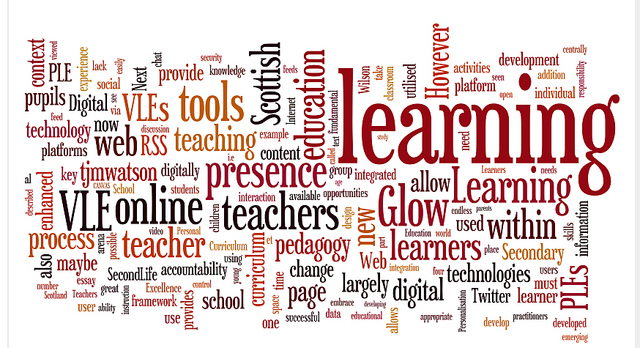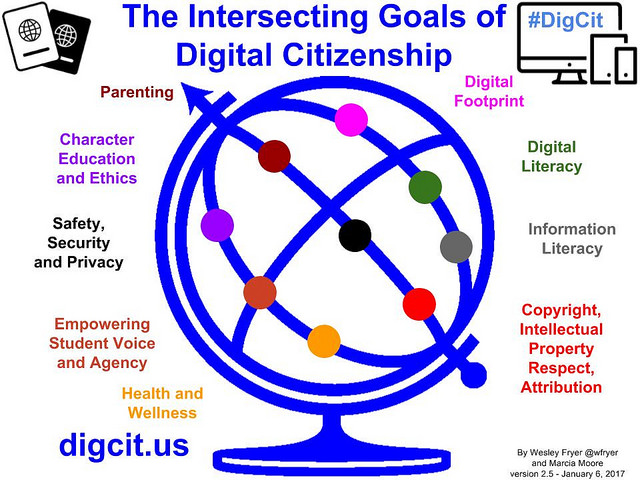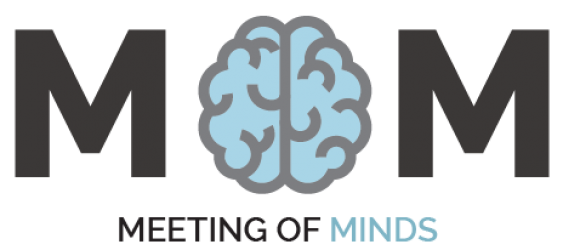There have been a number of models of digital literacy over the last couple of decades.
Groupings by Usage
In 2001, Prensky suggested that younger people thought and processed information in fundamentally different ways compared to older generations. He suggested that younger people (pre 1980s) were ‘digital natives’ and ‘speakers’ of the new technologies, while older people were ‘digital immigrants’ who were able to learn and use the new technologies, but not in the same intuitive way. But this dividing of generations has not been borne out by research (Helsper and Eynon, 2009), and more recent studies have been more nuanced. For example a recent study found that information search competencies have a high-level correlation with information literacy and a low-level correction with digital nativity (Çoklar, Yaman, and Yurdakul, (2017).
As a replacement for Prensky’s model, White and LeCornu (2011) suggested that the creation of Web 2.0 resulted in users behaving in either a resident-like fashion (using sites as social spaces for sharing and discussion), or visitors using the Web in a more instrumental way. It would be expected (according to the Pareto Principle) that visitors would predominate over a small number of ‘noisy’ residents. Wright, White, Hirst, and Cann, (2013) found that there was evidence that the visitor and resident model could be used to map student attitudes to academic use of social networks.

creative commons image taken from https://www.flickr.com/photos/wfryer/39501087882
Individual Cognitive Skills
Eshet-Akalai (2004, pg 93) stated that ‘digital literacy involves more than the mere ability to use software or operate a digital device; it includes a large variety of complex cognitive, motor, sociological, and emotional skills’. He therefore put forward ‘a holistic, refined conceptual framework for digital literacy, which included photo-visual literacy; reproduction literacy; branching literacy; information literacy; and socioemotional literacy’.
Parsons (2017) has also summaries research on the possibility that digital behaviours may be influenced by innate brain structures.
Some forms of digital literacy likely to be highly related to personal characteristics. There have already been a number of studies looking at how individual differences, including cognitive differences impact on information search and web-search. These have been summarised in a recent meta-review on individual differences and information search (O’Brien et al (2017).
Social Awareness
Other writers have questioned the idea that digital literacy can be seen as separate from domain knowledge, and pointed out that someone can have digital skills but still be incapable of identifying fake news and other forms of misinformation. McGrew, Breakstone, Ortega, Smith, and Wineburg (2018) tested students ability to spot fake news, and found that across tasks and grade levels, students struggled to effectively evaluate online claims, sources and evidence.
More recent models of digital literacy have become more complex. Martin and Grudziecki (2015, pg 8) talk of ‘digital bildung – suggesting an integrated, holistic approach, and the DigEuLit Project defined digital literacy as ‘the awareness, attitude and ability of individuals to appropriately use digital tools and facilities to identify, access, manage, integrate, evaluate, analyse and synthesize digital resources, construct new knowledge, create media expressions, and communicate with others, in the context of specific life situations, in order to enable constructive social action; and to reflect upon this process’. Similar models have been developed by others e.g see below.

creative commons image taken from https://www.flickr.com/photos/wfryer/39501087882
Use of Social Networks by Academics
Another post on this site reviews recent research on academic use of social media. This suggests that some academics prefer not to use social media, and that social media usage can vary depending on discipline and personal characteristics (e.g gender and country of origin). A number of academics in one study (Jordan and Weller, 2018), specifically mentioned problems with digital literacy when using social media.
Use of Social Networks by Students
Another post on this sites reviews recent research on student use of social media for academic purposes. This shows that this can result in homophily, and that there should not be an assumption that information technology in itself is capable of transforming education and learning (reflecting the findings of Martin and Grudziecki, 2015).
Meeting of Minds Model
The above findings suggest that the resident-visitor model might be useful in exploring potential use of the site by students i.e the majority are likely to be visitors (making instrumental use of the site), while a much small percentage are likely to be residents (making regular and intensive use of the site). It is, however, important to recognise that any group categories are of limited use, and that in reality the way the individual uses a site is likely to be highly influenced by their personal characteristics and interactions with others (e.g peers).
Our site could also link into key MOOCs (e.g FutureLearn) and other wider communities of interest e.g the Conversation. But rather than a traditional model where academics are teaching students through digital means or disseminating their research to a passive audience, our site will encourage academic discussion and debate across all layers of academia. In this model there would be more emphasis on interaction, peer review and feedback.
This would make ‘MeetingofMinds’, similar in concept to a cMOOC. cMOOCs are based on the ability of Web 2.0 to allow connections to be made (including through blogs and social media) and support learners to interact and create knowledge together (Siemens, 2012).
But findings set out in this post, as suggests that such interaction must also be built on the personal development of the student as both an individual and citizen. This includes:
- The willingness to engage in mutual learning and knowledge creation. This challenges the resident-visitor model above, for if too many users of a collective site are ‘free-loaders’ or ‘passive users’ or ‘lurkers’, then the amount of high quality, new material is likely to decrease on the site overall. Those producing such material may become disenchanted and disengaged with the process. Ways of tackling this might be to offer improved access rights on the site to those who produce more material which is rated high quality by others. Alternatively patterns in usage may identify where students are struggling to become independent researchers.
- Supporting students to develop knowledge creation skills, including improving their ability to recognise valid knowledge, work ethically with others, and use critical and reflection skills to properly judge digital information and then use it as part of knowledge formation. Some of this information is already provided on the SUSSED site including information on integrity and ethics, and teaching and learning.
The design of the ‘MeetingofMinds’ site, and the tools and templates used, would need to take account of the above factors (also see separate posting on homophily in academia and power differentials)..
By Nina Schuller
References
Çoklar, A, N., Yaman, N , D., and Yurdakul, I, K (2017) ‘Information literacy and digital nativity as determinants of online information search strategies’, Computers in Human Behaviour, 70, pp 1-9. https://doi.org/10.1016/j.chb.2016.12.050
Eshet-Alkalai, Y (2004) ‘Digital Literacy: A Conceptual Framework for Survival
Skills in the Digital Era’, Journal of Educational Multimedia and Hypermedia, 13(1), pp 93-106
Helsper, E and Eynon, R (2009) Digital natives: where is the evidence? British educational research journal. pp. 1-18. DOI: 10.1080/01411920902989227
Jisc (no date) ‘Building digital capabilities:The six elements defined’. Jisc. Available at http://repository.jisc.ac.uk/6611/1/JFL0066F_DIGIGAP_MOD_IND_FRAME.PDF (accessed on the 7 Apriil 2018)
Jordan, K and Weller, M 2018 Academics and Social Networking Sites: Benefits, Problems and Tensions in Professional Engagement with Online Networking. Journal of Interactive Media in Education, 2018(1): 1, pp. 1–9, DOI: https://doi.org/10.5334/jime.448
Martin, A and Grudziecki, J (2015) ‘DigEuLit: Concepts and Tools for Digital Literacy Development’. Journal Innovation in Teaching and Learning in Information and Computer Sciences, 5 (4), pp 1-19 https://doi.org/10.11120/ital.2006.05040249
McGrew, S., Breakstone, J., Ortega, T., Smith, M and Wineburg, S (2018) ‘Can Students Evaluate Online Sources? Learning From Assessments of Civic Online Reasoning’, Theory & Research in Social Education, pp 1-30, DOI: 10.1080/00933104.2017.1416320
Milligan, C., Littlejohn, A., Margaryan, A (2013) ‘Patterns of Engagement in Connectivist Massive Open Online Courses’. Researchgate. Available at https://www.researchgate.net/publication/261831667_Patterns_of_engagement_in_connectivist_MOOCs (Accessed on 7 April 2018)
O’Brien, H, L., Dickinson, R., and Askin, N (2017) ‘Scoping review of individual differences in information seeking behavior and retrieval research between 2000 and 2015’, Library & Information Science Research, 39 (3), pp 244-254. https://doi.org/10.1016/j.lisr.2017.07.007
Parsons, T, D (2017) The Interaction of Neuroscience and Affective Computing. Cambridge University Press. Cambridge.
Siemens, G (2012) ‘MOOCs are really a platform’. Elearningspace. Available at http://www.elearnspace.org/blog/2012/07/25/moocs-are-really-a-platform/ (Accessed 7 Apriil 2018)
White, S, D and Cornu, A, L (2011) Visitors and Residents: ‘A new typology for online engagement’. First Monday. 16 (9 – 5) http://journals.uic.edu/ojs/index.php/fm/article/view/3171
Wright, F., White, D, Hirst, T., Cann, A (2013) ‘Visitors and Residents: Mapping Student Attitudes to Academic Use of Social Networks’ Learning, Media and Technology. .doi:
10.1080/17439884.2013.777077
